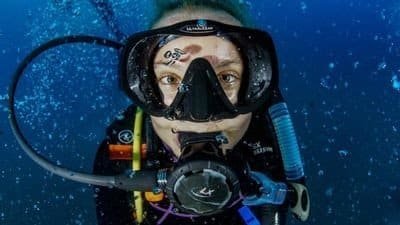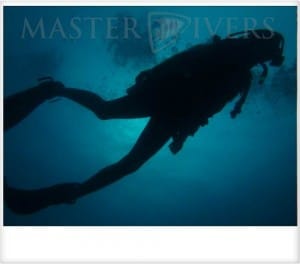Open water course
The first thing you need to consider is your health and the medical form.
Certain medical conditions may prevent you from diving, such as asthma and heart conditions. There are many more that could mean its unsafe for you to dive too so as you have not dived before please take a moment to have a look at the medical statement. In Thailand you only need a doctors clearance to dive if you have one of the listed conditions otherwise you can simply complete the form upon arrival. If you have one of the listed conditions, please be honest. It wont necessarily mean that you can’t dive but it does mean you need to see a doctor first. It is always better to see your own GP before leaving versus leaving it to chance here in Thailand. Your own doctor knows you better whereas here a local doctor is more likely to say no if in doubt. In some instances your GP may refer you to or ask you to consult with a doctor qualified in dive medicine so make sure you don’t leave this until the last minute.
You do need to have a reasonable fitness level to dive. You don’t need to be super fit but you do need to look after yourself. Diving does place physical demands on you and you will need an average level of stamina and fitness to complete the course.
You do also need to be able to swim. Participants need to complete a 200m swim or 300m snorkel but there is no time limit in which to complete this. Participants also need to be able to float for 10 mins too. If this is not in your level of comfort please do consult your dive centre for their recommendation as to how you can enjoy the ocean if your abilities are less than this.
If you have a fear of fish, the ocean, open water or water in general its worth considering if committing to the full open water course is the best place for you to start. Most dive centres offer snorkelling or a try diving experience of some kind. These will get you into the water with no pressure and give you the chance to see what you think first.
Make sure you have enough time to complete your diving. Remember you need to leave 24 hours in between your last dive and flying.
Alright, let’s really dive deep into this (pun intended!) and expand on all the crucial aspects of getting ready for your scuba diving adventure here in the beautiful Koh Tao, Surat Thani, Thailand. We’ll make sure to thoroughly cover the medical considerations, fitness requirements, swimming abilities, comfort levels with the underwater world, time management, and how all of this ties into your potential PADI Open Water Diver eLearning, finding the cheapest PADI Open Water course on PADI Open Water Diver Koh Tao, and even thinking ahead to your PADI Advanced Open Water certification.
First and foremost, your well-being is paramount, and that’s why we always start with the medical questionnaire. This isn’t just a formality; it’s a vital tool to ensure your safety beneath the waves. Certain pre-existing medical conditions can pose significant risks when you’re subjected to the pressures and unique environment of scuba diving. Conditions like asthma, various heart conditions (including but not limited to arrhythmias, valve issues, and a history of heart attack), epilepsy, diabetes (especially if not well-controlled), and even certain lung conditions can be contraindications to diving.
It’s crucial to understand that the underwater world presents a different set of physiological challenges compared to our everyday environment. The increased pressure at depth affects our bodies in numerous ways, from the compression of air spaces to the way gases dissolve in our bloodstream. For someone with a compromised respiratory or cardiovascular system, these changes can be particularly dangerous. Therefore, the medical form acts as a screening process to identify potential risks before you even get near the water.
Since you’re new to diving, taking a detailed look at this medical statement is absolutely essential. Don’t just skim it; read each question carefully and answer honestly. Remember, your dive center is not trying to exclude you from experiencing the wonders of the underwater realm. Their primary concern is your safety and the safety of everyone involved in the dive operation.
Now, let’s talk specifically about Thailand, and particularly Koh Tao, which is renowned for being a fantastic place to get your PADI Open Water Diver Koh Tao certification, often with some of the most competitive pricing, making it a popular choice for those seeking the cheapest PADI Open Water course. Here, the regulations stipulate that you only need a doctor’s clearance to dive if you declare any of the listed medical conditions on your form. If your medical history is clear of these specific issues, you can typically complete the form upon arrival at the dive center.
However, and this is a point we cannot stress enough, honesty is the best policy. If you have a condition listed, or even if you have a medical concern that isn’t explicitly mentioned but you feel might be relevant, please disclose it. Attempting to conceal a medical condition can have serious consequences for your health and safety during a dive.
Getting a doctor’s approval doesn’t necessarily mean you won’t be able to dive. In many cases, with a doctor’s sign-off confirming that your condition is well-managed and doesn’t pose a significant risk to diving, you can still proceed with your PADI Open Water Diver Koh Tao course.
We strongly advise that you consult your own General Practitioner (GP) before you travel, rather than leaving it to chance once you arrive in Thailand. Your GP has a comprehensive understanding of your medical history, any medications you’re taking, and your overall health status. They are in the best position to assess your suitability for diving and can provide a more informed opinion than a local doctor in Thailand who is meeting you for the first time.
Furthermore, your GP might identify a potential issue that requires further investigation or consultation with a specialist in dive medicine. These specialists have specific knowledge about how various medical conditions interact with the underwater environment and can provide a thorough evaluation. Arranging these consultations before your trip will save you time, potential disappointment, and ensure you have the necessary clearances in place. It would be a real shame to arrive in Koh Tao, ready to start your PADI Open Water Diver Koh Tao adventure, only to find out you need to postpone or even cancel due to unforeseen medical requirements. This also applies if you plan to undertake the theoretical portion through PADI Open Water Diver eLearning before your arrival.
Beyond medical fitness, a reasonable level of physical fitness is also essential for safe and enjoyable diving. You don’t need to be training for a marathon, but you do need to be in generally good health and have a basic level of stamina. Diving involves carrying equipment, finning against currents, and potentially assisting yourself or others in the water. While buoyancy control helps to minimize exertion underwater, getting to and from dive sites, as well as handling equipment on the surface, does require a certain degree of physical capability. Think of it this way: being reasonably fit will allow you to focus on the incredible marine life and the learning process of your PADI Open Water Diver Koh Tao course, rather than struggling with physical exertion. This foundation of fitness will also be beneficial if you decide to pursue your PADI Advanced Open Water certification in the future, which may involve more challenging dive conditions.
Swimming ability is another non-negotiable requirement for the PADI Open Water Diver Koh Tao certification. The standard prerequisites include completing a 200-meter continuous swim (any stroke is permitted) and a 10-minute float or tread water in water too deep to stand in. Importantly, there is no time limit for the 200-meter swim, emphasizing comfort and basic proficiency in the water. These skills are fundamental for your safety and confidence as a diver. If you are not comfortable with these requirements, it’s crucial to discuss this with your chosen dive center on PADI Open Water Diver Koh Tao. They may offer guidance or suggest alternative ways for you to enjoy the ocean if the full PADI Open Water Diver course isn’t immediately suitable. Some individuals who aren’t strong swimmers might find snorkeling to be a fantastic way to experience the underwater world initially.
Now, let’s address any potential fears you might have. A fear of fish (ichthyophobia), the vastness of the ocean (thalassophobia), open water in general (aquaphobia), or even a general discomfort with water can certainly make the prospect of a PADI Open Water Diver Koh Tao course daunting. It’s worth honestly considering if committing to the full open water certification is the right first step for you if you harbor these anxieties.
The good news is that most reputable dive centers on PADI Open Water Diver Koh Tao offer introductory experiences like snorkeling trips or “discover scuba diving” programs (often referred to as try dives). These options allow you to get into the water in a controlled and supportive environment, without the immediate pressure of a full certification course. You’ll have the chance to see how you feel being in the ocean, observe marine life up close, and assess your comfort levels before committing to the more comprehensive PADI Open Water Diver curriculum. This can be a fantastic way to gradually overcome any initial apprehension and build confidence in the aquatic environment, potentially paving the way for you to eventually pursue your PADI Open Water Diver Koh Tao certification, perhaps even after completing some of the theory through PADI Open Water Diver eLearning at your own pace.
Finally, and this is a crucial logistical consideration, please ensure you allocate sufficient time for your diving activities while you are in Koh Tao. The PADI Open Water Diver course typically takes a minimum of three to four days to complete, encompassing theory sessions, confined water skills practice, and open water dives. Rushing through the course is not advisable, as it can compromise your learning and safety.
Furthermore, and this is a non-negotiable safety rule, remember the 24-hour no-fly rule after your last dive. This is essential to allow your body to eliminate any excess nitrogen absorbed during diving and significantly reduces the risk of decompression sickness (also known as “the bends”) during or after your flight. Factor this mandatory surface interval into your travel plans to avoid any last-minute complications or having to miss your flight. This applies to all divers, whether you’ve just completed your PADI Open Water Diver Koh Tao certification or are a seasoned diver with your PADI Advanced Open Water.
In conclusion, preparing for your PADI Open Water Diver Koh Tao experience involves a holistic approach that considers your medical fitness, physical capabilities, comfort levels in the water, and careful time management. By addressing these aspects proactively, you’ll set yourself up for a safe, enjoyable, and truly unforgettable introduction to the incredible underwater world of Koh Tao, potentially even starting with the convenience of PADI Open Water Diver eLearning and finding a fantastic deal for the cheapest PADI Open Water course available. And who knows, you might just fall in love with diving and decide to come back for your PADI Advanced Open Water certification in the future!



